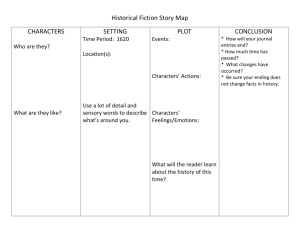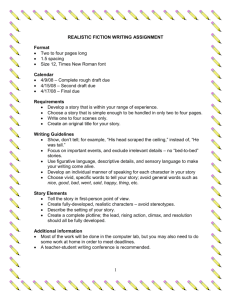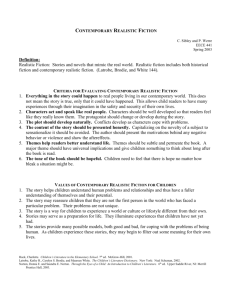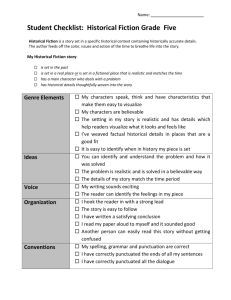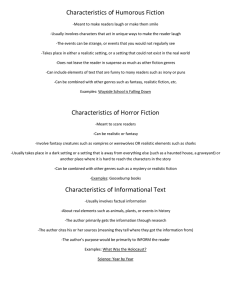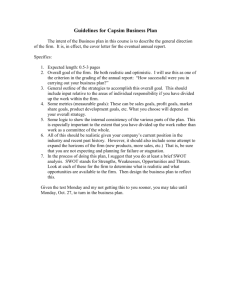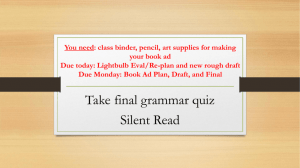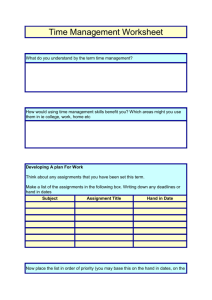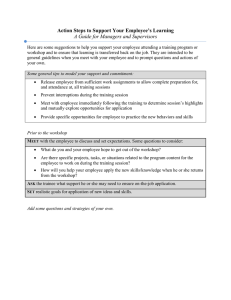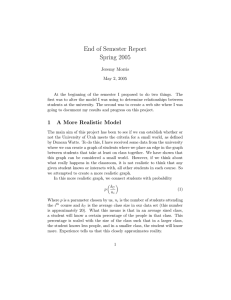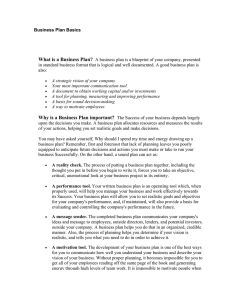Realistic Fiction Genre Study-2
advertisement
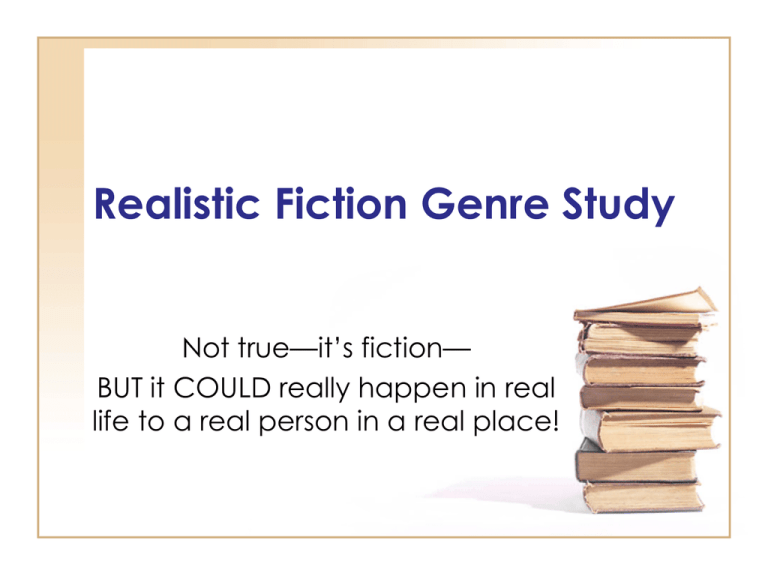
Realistic Fiction Genre Study Not true—it’s fiction— BUT it COULD really happen in real life to a real person in a real place! Elements & Characteristics • Real characters with real problems solved in a realistic manner in a real world setting • Most often based in the present or recent past. • The events raise questions or problems that a reader might face in real life Elements & Characteristics • Set in modern times • Events are not true, but they could be • Characters represent people you might know • Real world, real place (or could be a place), realistic setting • Everyday language • About people, their problems, and their challenges. • Themes dealing with basic truths of human nature Elements & Characteristics • Events are based on a conflict or problem that could happen in real life. • Events raise moral questions that readers might face in real life. • Readers learn a lesson or a value. Challenge readers to learn this lesson by making their own conclusions after they consider the events and facts from their own perspectives using their own moral and ethical judgments. Characters • Seem like real people • Behave as people or animals do in real life • Live in a place that could be real • Participate in a series of events that could probably happen • Are presented with a problem or dilemma and discover a realistic solution • Face problems and possibilities that are within the range of what is possible in real life • Are believable as real people • Their language and actions are appropriate for the setting of the story and reflective of who they are. Examples • Tales of A Fourth Grade Nothing (Judy Blume) • Because of Winn Dixie (Kate DiCamillo) • Hannah Montana, Suite Life of Zack & Cody, That’s So Raven • Holes (Louis Saacar) • Frindle and The Janitor’s Boy (Andrew Clements) • Make Way for Ducklings (Robert McClosky) • The Boxcar Children (Gertrude Chandler Warner) Class Mentor Text http://www.youtube.com/watch?v=N0fQpliJJQI
